Joint TDOA,FDOA and differential Doppler rate estimation:Method and its performance analysis
2018-02-02DexiuHUZhenHUANGShngyuZHANGJinhuLU
Dexiu HU,Zhen HUANG,Shngyu ZHANG,Jinhu LU
aSpace Technology Research Center,Tsinghua University,Beijing 100084,ChinabZhengzhou Information Technology Institute,Zhengzhou 450002,China
1.Introduction
In several areas including passive radar,sonar,communications,etc.,the signal received by two observation sensors often contains corresponding parameters such as Time Difference of Arrival(TDOA),Frequency Difference of Arrival(FDOA),etc.,which carry the information of the relative range and velocity for the target.Many practical applications can be realized using these parameters.In passive location for instance,two satellites or aircraft can locate emitter sources using time and frequency difference.1,2One class of source location methods are based on TDOA/FDOA.3–7The estimation accuracy oftheseparameterscan bevery importantin these applications.
The estimation of TDOA and FDOA has been intensively studied in the past many years.For TDOA estimation,a lot of methods based on cross-correlation have been developed.8To further improve its accuracy,interpolation algorithms and window functions9,10can be utilized.As the estimation of FDOA can be viewed as a dual problem of time delay estimation,it does not attract so mush interest.The problem of joint TDOA/FDOA estimation,however,is widely studied.11–15-Cross Ambiguity Function(CAF)may be the most wellknown method in this area,12,13although other modified methods also have been presented for some special cases,such as non-stationary higher order cumulant for correlative noises.16These methods model TDOA and FDOA to be constant parameters over the correlation aperture time.11Under this model assumption,the CAF method works well.
However,there is a contradiction between the estimation accuracy and model assumption using CAF.According to the estimation accuracy,13it is very important to enlarge correlation aperture time T in cross ambiguity function for a better parameter estimation accuracy and location performance.When T becomes large,however,other problems will happen.Time and frequency differences can be no more viewed as constant in this condition.Namely,Relative Time Companding(RTC)and Relative Doppler Companding(RDC)effects would deteriorate estimation accuracy distinctly.17,18This is because these two types of companding would not only reduce the output Signal-Noise Ratio(SNR),but also produce distortion on the shape of CAF.Specifically,RTC is mainly related to time difference and RDC is mainly related to frequency difference.The influence of these two types of companding should be discriminatively considered for different types of signals in passive location.For wideband signal,such as the wireless video or other data signals whose bandwidth is many MHz or more,RTC problem has to be mainly concerned.This is because wideband signal has a fairly high time delay resolution and relative time companding would be very sensitive relatively.Ref.19has analyzed the effects of RTC on time delay estimation and given the decreasing factor on the accuracy of time delay by Ω(π˙RBT/c)/3,where Ω(x)=|x3(sinxxcosx)-1|,˙Ris relative velocity,Tis the correlation aperture timecis the light velocity andBis signal bandwidth.This factor is useful for the case of˙RBT/c≤4.For the case of ˙RBT/c>4,the TDOA accuracy decreases drastically and the CAF method would become invalid.Many works have been published to solve the RTC problem,such as short-CAFs20and maximum likelihood correlator.21
For narrowband signal,such as the tactical radio signal whose bandwidth is only several kHz,however,RDC problem has to be mainly concerned.TDOA accuracy is relatively low and it needs an accurate FDOA estimation to ensure the location accuracy.In this way,it needs a much larger T compared with wideband signal,which results in a higher FDOA resolution.As a consequence,the change of FDOA would be more obvious and RDC problem is more likely to happen in this condition.22Since the frequency difference is dual with time difference,the decreasing factor for TDOA can be also used for FDOA,which can be given by Ω(π¨RT2/λ)/3,where¨Rdenotes relative acceleration and λ denotes wavelength.Similarly,this factor is useful for the case of¨RT2/λ≤4.Otherwise,the FDOA accuracy decreases drastically and the CAF method would become invalid.
To deal with RDC problem,differential Doppler rate has to be considered,22because the companding is caused by it.Therefore,the joint estimation of TDOA,FDOA and differential Doppler rate is needed.Compared with conventional estimation of differential time and frequency,the additional parameter of differential Doppler rate is included.It can be used to not only compensate relative Doppler companding,but also supply a new measurement for passive location.23–25Ref.23has shown that the location accuracy increases signifi-cantly by using additional parameter of differential Doppler rate.
The estimation of TDOA,FDOA and differential Doppler rate is a high-order problem for maneuvering target passive location.For the similar problem of maneuvering target detection and high-order target motion parameter estimation in active radar area,Refs.26–28proposed Radon-Fourier transform and generalized Radon-Fourier transform method.Besides,Refs.29–31also modeled radar target as fast highorder maneuvering mode and proposed fast calculation methods including the fast implementation of RFT,the Chirp-Z transform based method and particle swarm optimization.All these methods have obtained excellent results for highorder maneuvering target parameter estimation in radar area.Unfortunately,the joint estimation of TDOA,FDOA and differential Doppler rate in passive location area has not been studied comprehensively yet.
Motivated by the above facts in narrowband signal location,this paper focuses on the joint estimation of TDOA,FDOA and differential Doppler rate.We shall introduce a joint estimation method,derive the CRLB and analyze the performance of the method.The contribution of the paper includes:
(1)An estimation method for joint TDOA,FDOA and differential Doppler rate is proposed.This joint estimation is a three-dimensional problem and consequently hasto besolved efficiently.Besides,the estimation accuracy is very important in this problem.To solve the above two difficulties,a three-step estimation method is proposed in this paper.Thefirst step obtains an initial estimation of TDOA and differential Doppler rate.The second step obtains the estimation of FDOA and updates the estimation of TDOA.The third step updates differential Doppler rate estimation.
(2)The CRLB for the joint estimation is derived.The CRLB is useful to evaluate parameter estimation accuracy and forecast location precision.The derivation of CRLB is quite complicated as the source signal is unknown and non-cooperative.
(3)The performance of the proposed method is analyzed.The estimation variance of differential Doppler rate obtained by thefirst step is derived and compared with CRLB,showing that the variance cannot reach its CRLB in low SNR condition.Therefore,differential Doppler rate is updated in the following step and its accuracy reaches its CRLBfinally.
The remainder of this paper is organized as follows.The signal model is introduced in Section 2,the proposed method is described in Section 3,the CRLB is given in Section 4,and the simulation is shown in Section 5.Finally,a brief conclusion is given in Section 6.
2.Signal model
2.1.RDC problem
The conventional estimation model of TDOA/FDOA is usually constructed as

wheres(t)is the source signal,Tthe correlation aperture time,φ the initial phase,τ the time difference,andfcthe FDOA.n1(t)~N(0,σ21)andn2(t)~N(0,σ22)are additive,independent white Gaussian noises.Clearly,the FDOA is assumed to be constant in this model and the differential Doppler rate is ignored.Under this model assumption,the estimation accuracy of TDOA and FDOA using CAF can be given respectively as13

whereBndenotes noise bandwidth of the receiver, βs‘‘RMS radian frequency”of the signal,andrequivalent signal-noise rate.Note that

whereG(f)is the power spectral density ofs(t)andrithe SNR ofsi(t),i=1,2.
In practice,RTC and RDC problem may affect the TDOA/FDOA estimation performance.For wideband signal,such as the video and data signals with the bandwidth of several MHz,the relative time companding has to be mainly concerned.The time resolution of TDOA is 1/B,whereBdenotes the bandwidth of received signal.Given a certain integration time T,the time companding during this time isfc/f0T,wheref0denotes carrier frequency.Therefore,the relative time companding factor isfc/f0BT.Ref.20has shown that whenfc/f0BTexceeds 2.8,the relative time companding effect has to be considered.As wideband signal has much higher B,the relative time companding is more likely to happen.For example,when the carrier frequency is 400 MHz,the FDOA 2000 Hz,the bandwidth 10 MHz and the integration time 0.1 s,the relative time companding factor achieves 5 and has to be concerned in practice.
For narrowband signal,such as the tactical radio signal with bandwidth of several kHz,however,relative time companding is not likely to happen.For the same condition of the above example,when bandwidth is 10 kHz,the relative time companding factor is only 0.005,which can be ignored.As the time delay estimation accuracy is very low for narrowband signal,it needs a considerable FDOA accuracy to ensure location accuracy.As indicated by Eq.(2b),the only way to improve FDOA accuracy is to enlargeT.The influence of a largerTcan be described in two aspects.On the one hand,a largerTmeans a higher FDOA resolution,as it deserves 1/T.On the other hand,the Doppler companding is more distinct.We define a relative Doppler companding factor γ as



2.2.Dynamic signal model
The RDC problem occurs due to the ignoring of differential Doppler rate and the inconsistence between the assumed signal model and the real one.We reconstruct the signal model as
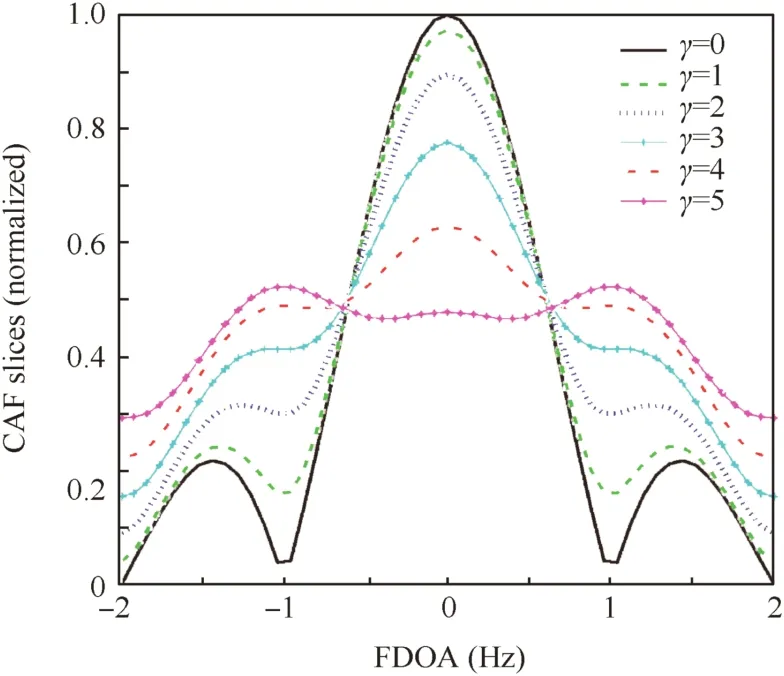
Fig.1 FDOA distortion of CAF with respect to Doppler companding factor γ.


As the TDOA,FDOA and differential Doppler rate are all unknown in the model,it has to concentrate on the joint estimation of all these parameters.After uncomplicated deduction,the correlation estimator,which is also Maximum Likelihood(ML)estimator,can be given as

However,this estimator is very computationally expensive,because it needs a three-dimensional searching.This paper seeks other alternative solution for joint estimation of TDOA,FDOA and differential Doppler rate.
3.Proposed estimation method
Since the joint estimation of TDOA,FDOA and differential Doppler rate needs a three-dimensional searching,it is very computationally expensive.So parameter dimension reduction method is needed.This section tries to decrease the parameter dimension using the Second-order Ambiguity Function(SAF)and estimate the parameters iteratively.
3.1.Preparation of proposed method
The high-order ambiguity function33–35is widely used to estimate parameters of Polynomial-Phase Signal(PPS)embedded in noise.As only second-order is used in the proposed method,this subsection briefly introduces this specific algorithm.
A second-order PPS is given with

whereAdenotes the amplitude,anda0,a1anda2denote the coefficient of different orders.For a certain time lagl,the Second-order Instantaneous Moment(SIM)ofs(n)can be given as

The SAF is defined as the discrete Fourier transform of the SIM,namely

It can be found from Eq.(8)thatxl(n)is a sinusoid.Therefore,the corresponding SAF transform in Eq.(9)has a peak value at the frequency of
This characteristic inspires us that the FDOA can be eliminated and the parameter dimension can be decreased using SAF.
3.2.Dimensionality reduction using SAF
When considering the TDOA,FDOA and differential Doppler rate simultaneously,the discretely sampled signals can be given according to Eq.(5)as

As beginning,the cross-conjugate product of the two received signals can be given as

andv′(n)is the noise.Then,for a certain time lagl,the SIM transform ofzm(n)can be given as

Case 1.m=τ.In this condition,

Obviously,z0m(n)is a second-order PPS signal andzm(n)is its noised form.Furthermore,


Case 2.m≠τ.We suppose that the instantaneous phase ofs(n)isp(n),which is a random value for phase modulated signal,and thenz0m(n)can be expressed as



Furthermore,the following issues have to be discussed:(A)The selection oflfor a better estimation performance.(B)The estimation variance using SAF.(C)The way to estimate initial FDOA.We shall discuss the selection ofl,the variance of differential Doppler rate,compare it with its CRLB and modify the estimation strategy according to the comparison.After that,the final processing flow of the proposed method can be given.
3.3.Resolution of Doppler rate and selection of l



It is clear that the differential Doppler rate resolution is related tol.Both a too bigland a too smalllwould result in a low resolution.The best selection oflshould optimize differential Doppler rate resolution,thus maximizing (N-2l)l,because the differential Doppler rate is not too large in practice.It is not hard to conclude that whenl=N/4, (N-2l)lis the largest and the resolution of differential Doppler rate is the best.So,the selection oflshould beN/4 in practice.The resolution of differential Doppler rate in this condition yields


3.4.Estimation variance using SAF
This subsection discusses the estimation variance of TDOA and differential Doppler rate using SAF.




It can be seen from Eqs.(20)–(22)that the SAF ofs1(n)ands2(n)can be also viewed as conventional CAF ofa1(n)anda2(n).Therefore,the estimation accuracy of TDOA and differential Doppler rate can be directly given by CAF method,13which can be expressed as

where βasdenotes the rms bandwidth ofa(n),Ta= (N-2l)Tsdenotes the time length ofa(n),and

Note thatra1andra2denote the SNR ofa1(n)anda2(n),respectively.Ass(t)is power normalized in the signal model,we have

To achieve the best differential Doppler rate resolution,lis assigned to beN/4.In this condition,Eqs.(23a)and(23b)can be simplified as


Let’s discuss this η under the conditions of high SNR and low SNR.

(2)At low SNR,the cross terms of σ1and σ2enlarge noises dramatically and η should be much larger than 1.This means that the estimation variance of differential Doppler rate cannot reach its CRLB.Besides,the accuracy of TDOA estimation using SAF cannot reach its CRLB in the same way that the cross terms of σ1and σ2enlarge noises dramatically at low SNR.The above problems at low SNR occur mainly because the SAF transform enlarges the noises.
3.5.Processingflow
To improve the accuracy of differential Doppler rate and TDOA,especially at low SNR,we have to reconsider the estimation method and try to decrease the cross items.Besides,the estimation of FDOA has to be considered.
Firstly,we concentrate on the TDOA and FDOA estimation.As the initial differential Doppler rate has been obtained using SAF,the RDC can be compensated.In this way,TDOA can be updated and FDOA can be obtained using CAF after differential Doppler rate compensation,namely

Then,we concentrate on the accurate estimation of differential Doppler rate and try to improve its accuracy at low SNR.The differential Doppler rate can be iterated using the estimation of TDOA and FDOA,namely

Thefinal method for joint TDOA,FDOA and differential Doppler rate estimation can be obtained from above analyses,which is listed in Table 1.The proposed method includes three steps.Thefirst step obtains an initial estimation of TDOA and differential Doppler rate using SAF transform,which can reduce dimension of parameter space.The second step uses CAF with differential Doppler rate compensation to update TDOA estimation and obtain FDOA estimation.The TDOA searching scope in this step can be narrower than that in thefirst step,because the initial TDOA estimation is known.The third step of the proposed method is to update the estimation of differential Doppler rate using cross estimator,which introduces less cross items.
The computation amount of the proposed method is much smaller than that of ML estimator given by Eq.(6).We suppose that the date length isN,TDOA searching number isNt,TDOA searching number isNfand differential Doppler rate searching number isNdf.The ML estimator’s computation amount is approximatelyNNtNfNdf,while that of the proposed method is approximately 2NNtNdf+NNtNf+NNf,where the three addition items are the computation amount in the three steps.IfNt=100,Nf=100 andNdf=100,the computation burden of the proposed method is only 3%of ML estimator.Therefore,the computation burden decreases obviously.
For the sake of completeness,we discuss the error propagation characteristic of the proposed method here.First,we focus on the influence of differential Doppler rate error on TDOA/FDOA estimation.In the second step,the estimated differential Doppler rate is used to compensate the relative Doppler companding.According to Eq.(26b),the RMSE of differential Doppler rate estimation in thefirst step is

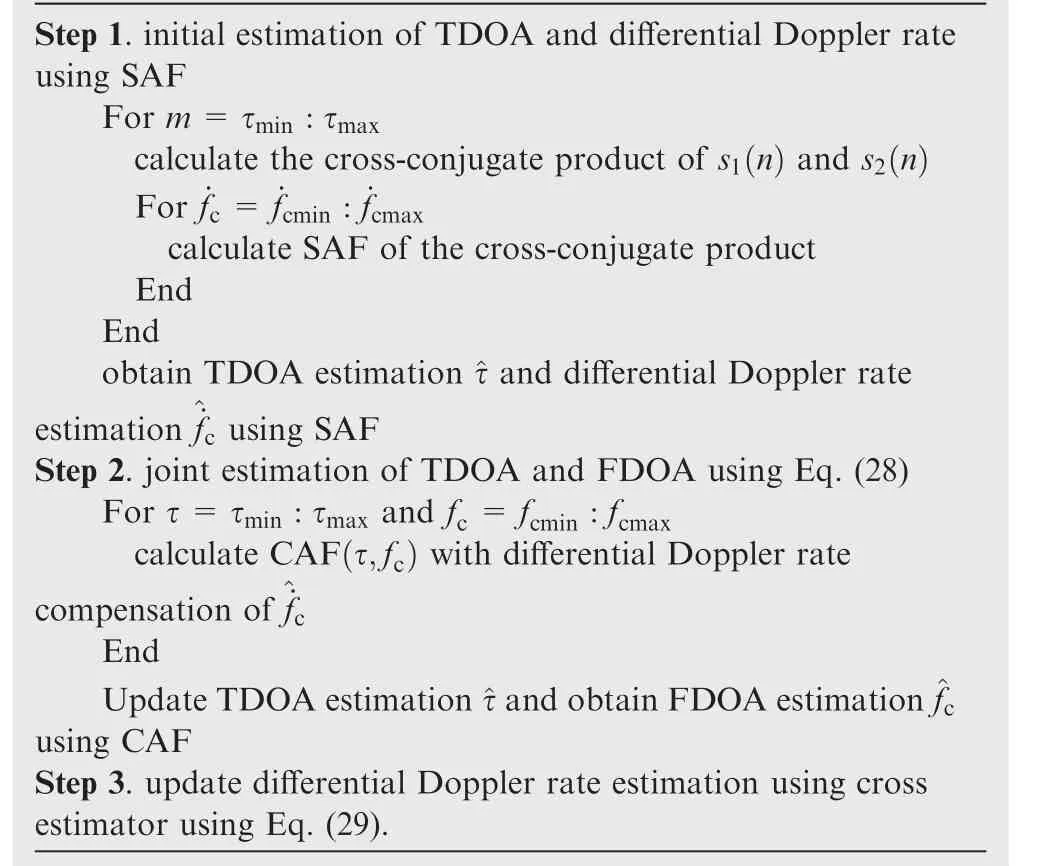
Table 1 Steps of proposed method.
whereN=BnTis the sample number.According to Eqs.(4)and(30),the residual Doppler companding factor after compensation is approximately

As the sample numberNis large in most cases,the factor is very small.For example,when the SNR of received signal is 0 dB and the number of sample is 10,000,it can be calculated that the residual Doppler companding factor is 0.085.This companding factor is far smaller than 1 and will become further smaller in higher SNR condition.This factor can be ignored in the estimation of TDOA and FDOA.As a result,the accuracy of TDOA and FDOA can approach CRLB using compensated CAF.Moreover,as the TDOA and FDOA are accurate enough and have approached CRLB,the accuracy of differential Doppler rate can be assured in the third step and this parameter can also approach CRLB consequently.
4.CRLB of joint TDOA,FDOA and Doppler rate estimation
This section concerns the CRLB of joint TDOA,FDOA and differential Doppler rate estimation.
4.1.Vector signal model
The source signal vector and its time-delayed form can be expressed using vectors as follows:

wheresτ(n)denotess(n- τ).It is clear that the relation|τ|≪Tis always obeyed in practice(Tdenotes the correlation aperturetime).15Asaresult,sτcan beapproximated as sτ≈ FHDτFs using discrete Fourier transform,where


where and G=D1D2FHDτF.Note that⊙ denotes dot cross with(A ⊙ B)ij=AijBij.The expression in Eq.(34)constructs the vector model of the received signal,in which the delayed signal is represented by discrete Fourier transform of original signal.Therefore,this model contains less unknown parameters than the model in Eq.(11).
4.2.Signal-specific CRLB


where u and Σ are mean and covariance matrix respectively,namely
The Fisher Information Matrix(FIM)of α can be given by36

∂u/∂α can be calculated as


where P=GHB.
Up to now,the (2N+4)× (2N+4)FIM of α have been derived.However,it has to be recalled that our only interested parameter is θ.Therefore,we begin to obtain the FIM of θ from Jα.According to Eq.(40),it can be deduced that

where Jθdenotes the FIM of θ.After some algebraic manipulation,the explicit expression of BHB can be given in Eq.(42).This expression is related to the source signal,namely signalspecific.For different signal type and observation window,it can give a specific and accurate bound.Thus,it is fit for any type of signal.

4.3.CRLB for stationary and Constant-Envelope signal
The expression in Eq.(42)is signal-specific.For a stationary and constant-envelope signal with power spectral densityS(f),however,we are more interested in the FIM of θ regardless of observation window and signal type.This can be obtained using the expectation of Jθ,which is expressed in Eq.(43).



denotes the root-mean-square bandwidth.
It can be seen from Eqs.(44a)and(44b)that the CRLB of TDOA and FDOA derived from the dynamic signal model in Eq.(11)is the same with that derived from the conventional model in Eq.(1)15,meaning that there is no accuracy loss on the TDOA and FDOA using the new model.Besides,the CRLB of differential Doppler rate obtained in Eq.(44c)shows that the accuracy of differential Doppler rate is directly related toT5,meaning that a better differential Doppler rate estimation needs a larger observation window length.The CRLB in Eqs.(44a)–(44c)is useful to evaluate parameter estimation accuracy and forecast location precision.In Section 3.4,the CRLB has been used to evaluate estimation accuracy and in Section 5,it will be further used to compare estimation accuracy in simulations.
5.Simulation analysis
This section contains numerical simulations to demonstrate the proposed method and to evaluate its performance under different conditions.
Thefirst simulation is implemented to evaluate the estimation variance of the proposed method.The assumed emitter signal is a BPSK signal with symbol rate ofB=10 kHz and carrier frequency off0=400 MHz.The total observation time isT=0.2732 s and the sampling rate isFs=30 kHz.The TDOA is τ=10/Fs,FDOA isfc=520 Hz and differential Doppler rate is˙fc=100 Hz/s.It can be deduced that the relative time companding factor is 0.0036 and relative Doppler companding factor is 7.4,so only RDC has to be concerned in our simulation condition.Besides,all the RMSE curves are based on 500 times of Monte Carlo experiments in our simulation.
Fig.2 shows TDOA estimation RMSE corresponding to SNR.The four plotted curves are statistical RMSE of TDOA using SAF,statistical RMSE of TDOA using compensated CAF,theoretical RMSE of TDOA using SAF,and CRLB of TDOA.It is important to note that the statistical RMSE of TDOA using SAF is obtained by thefirst step of the proposed method and the RMSE of TDOA using compensated CAF is obtained by the second step of the proposed method,in which the differential Doppler rate has been compensated.The following can be found:(A)The statistical RMSE using SAF is coincident with the theoretical one,meaning that our theoretical analysis of SAF is effective.(B)In both low and high SNR conditions,the RMSE of the compensated CAF can approach the CRLB,meaning that the performance is good.(C)In the low SNR condition,the estimation performance of SAF on TDOA is quite poor while the performance of compensated CAF is much better and it can almost achieve the CRLB.This is because the CAF transform contains less cross items compared with SAF transform,and thus the noise level is not enlarged too much in low SNR condition.Besides,differential Doppler rate is compensated using its estimation value and RDC problem is avoided in the proposed method.The experimental results are consistent with the theoretical analysis in Section 3.4.
Fig.3 illustrates the FDOA estimation RMSE corresponding to SNR.It can be seen that the estimation of FDOA achieves a significantly good performance under both low and high SNR conditions and it can approach its CRLB.This is because that the differential Doppler rate is compensated in the estimation of FDOA.For example,when SNR=0 dB,the differential Doppler rate estimation accuracy in thefirst step is about 1.3 Hz/s and the residual Doppler companding factor is 0.09.This factor is really small enough and can be almost ignored.As a result,the accuracy of FDOA can approach its CRLB.The experimental result is accordant with the theoretical analysis.
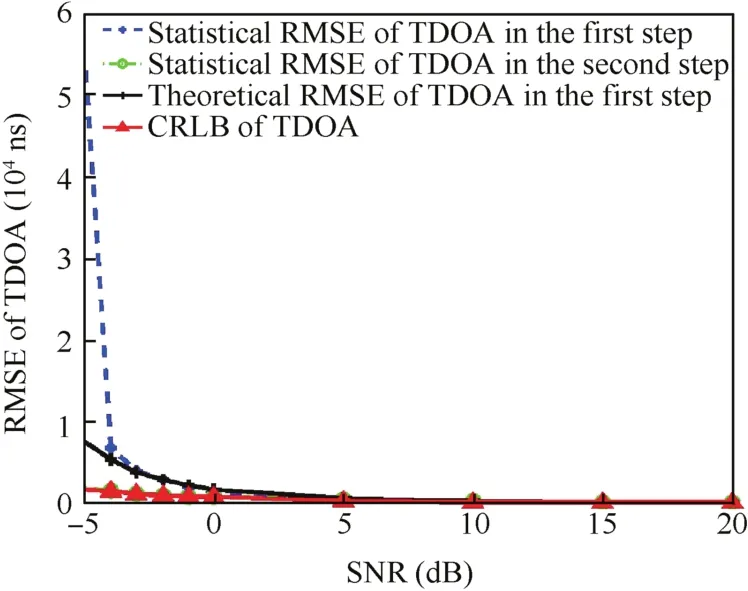
Fig.2 RMSE of TDOA estimation.
Fig.4 demonstrates differential Doppler rate estimation RMSE corresponding to SNR.Four curves are plotted in thisfigure,including statistical RMSE in the first step,theoretical RMSE in thefirst step,statistical RMSE in the third step and the CRLB.Note that the estimation of differential Doppler rate in thefirst step is obtained by SAF and that in the third step is obtained by cross estimator,which is also thefinal estimation.The following can be found:(1)The differential Doppler rate estimation performance using SAF is poor in the low SNR condition.This is because the SAF transform contains too many cross items and enlarges noise level at low SNR.(2)The statistical RMSE using SAF is in agreement with the theoretical one,indicating that the theoretical analysis is effective.(3)Thefinal Doppler rate estimation performance in the third step is quite well at both low and high SNRs and it can approach the CRLB.This is because thefinal estimation of differential Doppler rate is obtained using cross estimator and it does not enlarge noise level as SAF.Besides,the estimated TDOA and FDOA used in the third step are accurate enough and have approached CRLB as shown in Figs.2 and 3,so differential Doppler rate estimation is hardly affected by the above parameters and can also approach CRLB.The experimental results are accordant with our theoretical analysis.
The second simulation is implemented to compare the estimation performance of the proposed method,the conventional CAF method13and the ML method37using rotating tethered satellite formation.As a new design scheme formation,tethered satellite formation draws great attention in recent years.6,38Tethered satellite formation is composed of two or more satellites,which are connected with each other by long tethers.It can be utilized for a variety of space missions and scientific researches.6Particularly,the rotating tethered satellite formation can also be used for source localization.32In this simulation,we assume that the distance between satellites is 3.75 km,the height from the earth is 500 km and rotation period is 50 s.The FDOA is 520 Hz and the differential Doppler rate is about 300 Hz/s.The assumed emitter signal is the same with that in the previous simulation.It can be deduced that the relative time companding factor is 0.0036 and relative Doppler companding factor is 22.4,so only RDC happens under our simulation condition.
Fig.5(a)shows a comparison of TDOA estimation.It can be seen that the accuracy of the proposed method is close to that of the ML method and both these two methods can approach CRLB.In contrast,the conventional CAF method performs poorer than the above two methods.This is because the RDC problem reduces the output SNR of CAF,although the CAF’s shape in the TDOA direction is not distorted in conventional CAF method.It has to be noted that although our method performs close to ML method,its computational burden is much less.Fig.5(b)shows a comparison of FDOA estimation.It is clear that the proposed method performs closely to ML method and both of them can approach CRLB,but our method’s computational burden is much less.Besides,the accuracy of the proposed method is much better than that of conventional CAF method,increasing by many times.This is because the proposed method can avoid RDC problem,while the conventional method suffers from both the reduction of output SNR and distortion of CAF in FDOA direction.This simulation result is accordant with the theoretical analysis.

Fig.3 RMSE of FDOA estimation.

Fig.4 RMSE curves of differential Doppler rate estimation with lag of N/4.
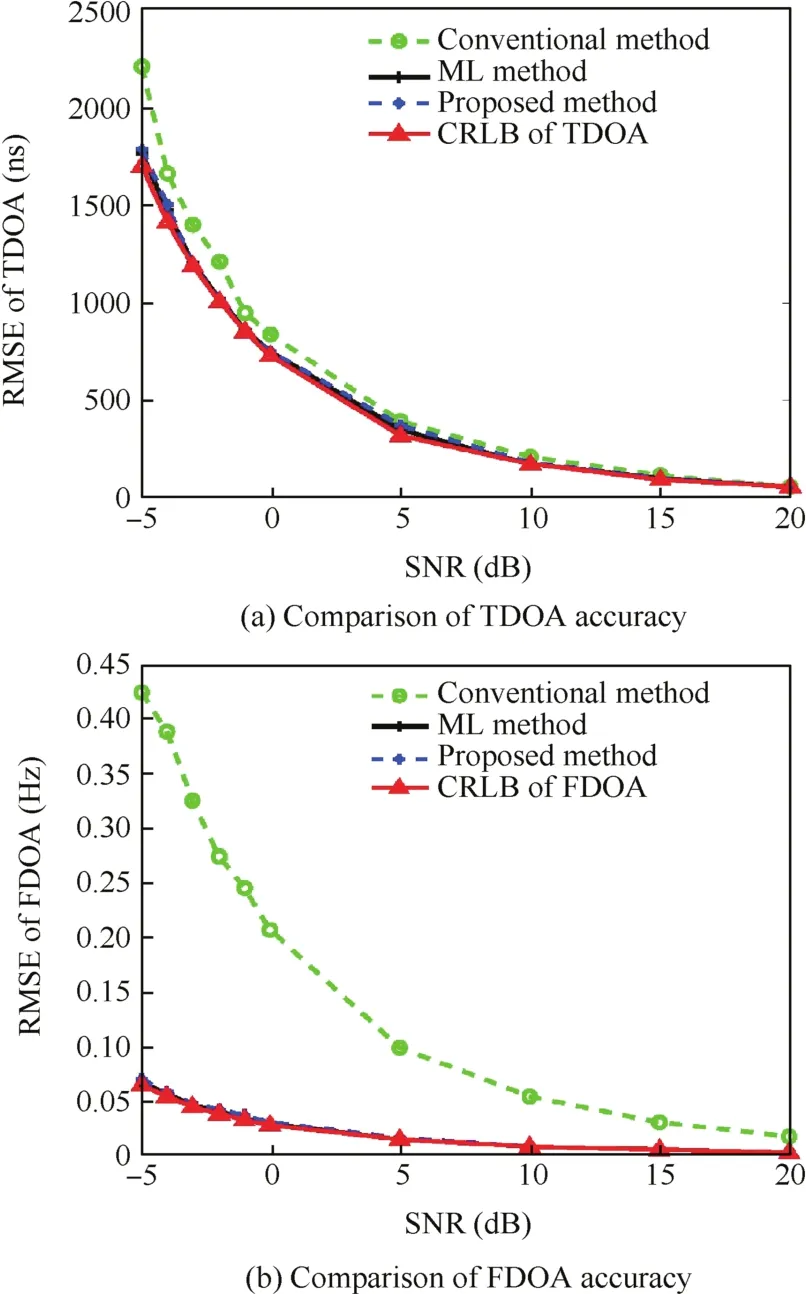
Fig.5 Comparisonbetweenproposedmethodandother methods.
6.Conclusions
This paper focuses on RDC problem in the estimation of FDOA,gives a joint estimation method of TDOA,FDOA and differential Doppler rate,derives its CRLB and analyzes the estimation error.The estimation method solves the threedimensional searching process by two two-dimensional searching and one one-dimensional searching.The simulation results show that the estimation of TDOA,FDOA and differential Doppler rate can achieve their CRLB quite well.The differential Doppler rate can not only avoid RDC problem and improve the estimation performance of TDOA/FDOA in satellite or aircraft based high dynamic scenario,but also supply an additional location parameter for a better accuracy.
Acknowledgement
This study was supported by the National Natural Science Foundation of China(No.61671273).
Appendix A.Some Details in Derivation of E[Jα]
This section contains the derivation ofE[Jα]from Jθ.Note thatTsdenotes the sampling interval andBn=1/Tsdenotes the noise bandwidth in the following functions.
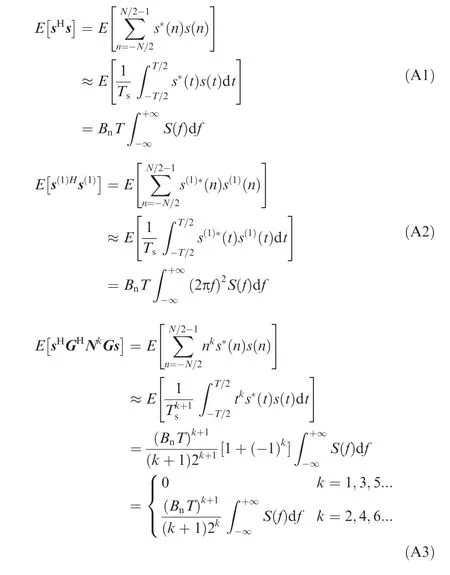
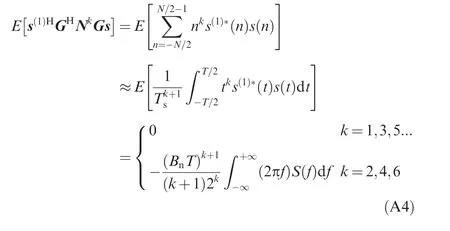
1.Zhu GH,Feng DZ,Xie H,Zhou Y.An approximately efficient biiterative method for source position and velocity estimation using TDOA and FDOA measurements.Sig Process2016;125:110–21.
2.Cao YL,Peng L,Li JZ,Yang L,Guo FC.A new iterative algorithm for geolocating a known altitude target using TDOA and FDOA measurements in the presence of satellite location uncertainty.Chin J Aeronaut2015;28(5):1510–8.
3.Ho KC,Xu W.An accurate algebraic solution for moving source location using TDOA and FDOA measurements.IEEE Trans Signal Process2004;52(9):2453–63.
4.Wang G,Li Y,Ansari N.A semidefinite relaxation method for source localization using TDOA and FDOA measurements.IEEE Trans Veh Technol2013;62(2):853–62.
5.Zhu GH.Bi-iterative method for moving source localisation using TDOA and FDOA measurements.Electron Lett2014;51(1):8–10.
6.Wang D,Huang P,Meng Z.Coordinated stabilization of tumbling targets using tethered space manipulators.IEEE Trans Aerosp Electron Syst2015;51(3):2420–32.
7.Wang G,Chen H,Li Y,Ansari N.NLOS error mitigation for TOA-based localization via convex relaxation.IEEE Trans Wireless Commun2014;13(8):4119–31.
8.Azaria M,Hertz D.Time delay estimation by generalized cross correlation methods.IEEE Trans Acoust Speech Signal Process1984;32(2):280–5.
9.Jacovitti G,Scarano G.Discrete time techniques for time delay estimation.IEEE Trans Signal Process1993;41(2):525–33.
10.Hu D,Huang Z,Lu JH,Liang K.Time delay estimation based on bandpass sampling theorem and bisection searching.12th IEEE international conference on fuzzy systems and knowledge discovery(FSKD);2016 Jan 16;Zhangjiajie,China.Piscataway:IEEE Press;2015.p.1997–2001.
11.Fowler ML,Hu X.Signal models for TDOA/FDOA estimation.IEEE Trans Aerosp Electron Syst2008;44(4):1543–50.
12.Carter GC.Coherence and time delay estimation.Proc IEEE1987;75(2):236–55.
13.Stein S.Algorithms for ambiguity function processing.IEEE Trans Acoust Speech Signal Process1981;29(3):588–99.
14.Goh SS,Goodman TNT,Shang F.Joint estimation of time delay and Doppler shift for band-limited signals.IEEE Trans Signal Process2010;58(9):4583–94.
15.Yeredor A,Angel E.Joint TDOA and FDOA estimation:A conditional bound and its use for optimally weighted localization.IEEE Trans Signal Process2011;59(4):1612–23.
16.Shin DC,Nikias CL.Complex ambiguity functions using nonstationary higher order cumulant estimates.IEEE Trans Signal Process1995;43(11):2649–64.
17.Rihaczek AW.Delay-Doppler ambiguity function for wideband signals.IEEE Trans Aerosp Electron Syst1967;3(4):705–11.
18.Hack DE,Patton LK,Himed B.Detection in passive MIMO radar networks.IEEETransSignalProcess2014;62(11):2999–3012.
19.Betz J.Effects of uncompensated relative time companding on a broad-band cross correlator.IEEE Trans Acoust Speech Signal Process1985;33(3):505–10.
20.Ulman R,Geraniotis E.Wideband TDOA/FDOA processing using summation of short-time CAF’s.IEEE Trans Signal Process1999;47(12):3193–200.
21.Betz J.Comparison of the deskewed short-time correlator and the maximum likelihood correlator.IEEE Trans Acoust Speech Signal Process1984;32(2):285–94.
22.Yasotharan A,Thayaparan T.The performance of the Fourier method in detecting an accelerating target and estimating its median velocity.2000 IEEE Radar Conference;2016 May 12;Alexandria(VA),USA.Piscataway:IEEE Press;2000.p.59–64.
23.Hu D,Huang Z,Chen X,Lu J.A moving source localization method using TDOA,FDOA and doppler rate measurements.IEICE Trans Commun2016;99(3):758–66.
24.Diao M,Wang Y.Research of passive location based on the Doppler changing rate.Syst Eng Electron2006;5:015.
25.Rose CM.Doppler rate and angle rate passive emitter location.U.S.Patent 5689274.1997-11-18.
26.Xu J,Yu J,Peng YN,Xia XG.Radon-Fourier transform for radar target detection,I:Generalized Dopplerfilter bank.IEEE Trans Aerosp Electron Syst2011;47(2):1186–202.
27.Xu J,Xia XG,Peng SB,Yu J,Peng YN.Radar maneuvering target motion estimation based on generalized Radon-Fourier transform.IEEE Trans Signal Process2012;60(12):6190–201.
28.Xu J,Yu J,Peng YN,Xia XG.Radon-Fourier transform for radar target detection(II):Blind speed sidelobe suppression.IEEE Trans Aerosp Electron Syst2011;47(4):2473–89.
29.Xu J,Zhou X,Qian LC,Xia XG,Long T.Hybrid integration for highly maneuvering radar target detection based on generalized radon-fouriertransform.IEEETransAerospElectronSyst2016;52(5):2554–61.
30.Qian LC,Xu J,Xia XG,Sun WF,Long T.Fast implementation of generalised Radon-Fourier transform for manoeuvring radar target detection.Electron Lett2012;48(22):1427–8.
31.Yu J,Xu J,Peng YN,Xia XG.Radon-Fourier transform for radar target detection(III):Optimality and fast implementations.IEEE Trans Aerosp Electron Syst2012;48(2):991–1004.
32.Zhang S,Huang Z,Hu D.Investigation on source localization performance using rotating tethered satellite formation.2016 8th international conference on wireless communications&signal processing(WCSP);2016.p.1–5.
33.Scaglione A,Barbarossa S.Statistical analysis of the product highorder ambiguity function.IEEE Trans Inf Theory1999;45(1):343–56.
34.Barbarossa S,Scaglione A,Giannakis GB.Product high-order ambiguity function for multicomponent polynomial-phase signal modeling.IEEE Trans Signal Process1998;46(3):691–708.
35.Porat B,Friedlander B.Asymptotic statistical analysis of the highorder ambiguity function for parameter estimation of polynomialphase signals.IEEE Trans Inf Theory1996;42(3):995–1001.
36.Kay SM.Fundamentals of statistical signal processing,volume I:estimation theory.Upper Saddle River(NJ):Prentice Hall;1993.
37.Borowiec K,Malanowski M.Accelerating rocket detection using passive bistatic radar.17th International IEEE Radar Symposium(IRS);2016.p.1–5.
38.Chang I,Park SY,Choi KH.Nonlinear attitude control of a tether-connected multi-satellite in three-dimensional space.IEEE Trans Aerosp Electron Syst2010;46(4):1950–68.
杂志排行
CHINESE JOURNAL OF AERONAUTICS的其它文章
- Multi-mode diagnosis of a gas turbine engine using an adaptive neuro-fuzzy system
- PHM with Aerospace Applications
- A critique of reliability prediction techniques for avionics applications
- Reduction rules-based search algorithm for opportunistic replacement strategy of multiple life-limited parts
- Satellite lithium-ion battery remaining useful life estimation with an iterative updated RVM fused with the KF algorithm
- A Bayesian approach for integrating multilevel priors and data for aerospace system reliability assessment
